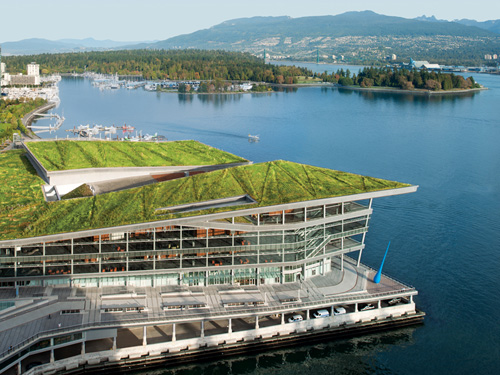PERIMETER BLOG
LATEST NEWS & INTERESTING FACTSSometime in the past 40 years ago, society figured out that it was time to clean up after itself. No more scattering garbage all over the beautiful planet on which we live. It was a fantastic realization, but it was probably a couple hundred years late. It’s the reason we’re still committed to neighbourhood cleanup projects – it’s not quite ingrained throughout society how important it is to limit your impact on the environment.
And we have good news! A second major environmental realization has gripped public consciousness in recent years. We’re starting to stay clean during the process of building and creating so we don’t need to worry about it later.
Pretty simple idea, right?
Well, as a society we can sometimes be compared with a young child who detests keeping his room clean. So instead of maintaining it properly, it turns into a disaster zone on a weekly basis, to the point where the only option is a gigantic clean up job.
Not fun.
Leadership in Energy & Environmental Design
Somewhere along the line parents figured out that if you reward your child for keeping his room clean on a frequent basis, he’ll figure it out. In other terms, straight-up bribery. Well, that’s kinda how the world works, right? Rewarding good behaviour is more powerful than punishing poor behaviour.
On a much grander scale, this the reason the leadership in energy and environmental design rating system was created. LEED is a system that measures construction methods that are committed to sustainability and environmental consciousness. It’s recognized in 150 countries. From homes to office buildings to recreation facilities, LEED buildings are built to have as little lasting impact on the environment as possible.
Plus, LEED buildings are pretty cool to live and work in.
Case Studies
The important key to note is that LEED buildings weren’t created overnight. The process of using sustainable materials and methods when you’re building various structures is always evolving. The best way to continually push this evolution forward is to learn from other countries, other construction companies and other facilities.
From the Canada Green Building Council, here are a couple examples of LEED buildings in Canada:
Recreation Facilities: The Toronto Pan Am Sports Centre is a LEED building that promotes health and wellness not only with the programs it offers, but with the very walls in which these programs occur. It’s easy to commit yourself to a healthy lifestyle when the facility in which you exercise is doing the same on a planetary scale.
Health Care Facilities: “A growing body of evidence is showing that access to green building features such as natural daylight and views contribute to patient rehabilitation and recovery, and increase feelings of well-being, comfort and wellness for all building occupants, as well as increased productivity for hospital staff and caregivers.”
Read more about the Bridgeport Hospital in Toronto, Ontario.
Office Buildings: The location we end up spending the majority of our time has, in the past, often been the places we’ve neglected the most. If you work 40 hours each week, wouldn’t you rather those hours be spent in the presence of natural sunlight, open floorplans and systems that guarantee clean air and low emissions? Of course you would. And we’re getting there.
Read more about commercial office buildings
We’ll talk more about LEED homes in the future, but it’s a lot easier to have control over the type of home you live in than it is the gym you visit, the hospital that serves you or the office in which you work. It’s a common conscious decision we all need to talk about so as more buildings are built, more green buildings are built.
Alright, I have to go clean my room.

